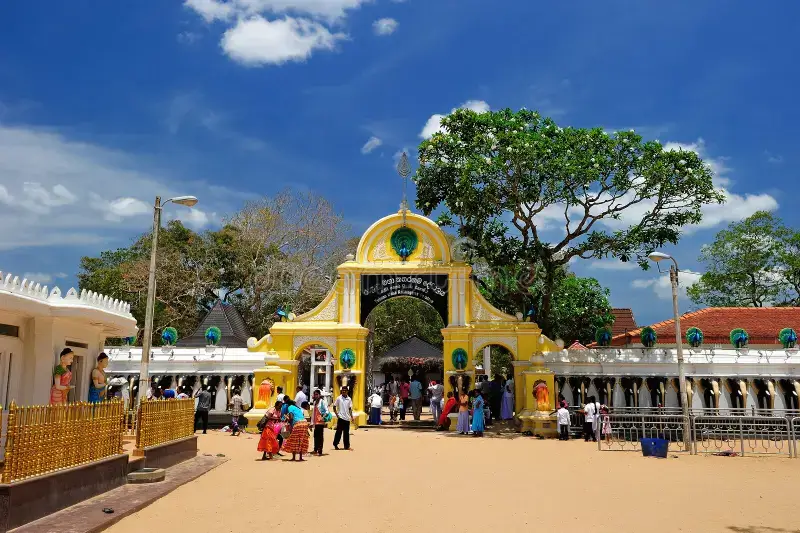Kallady Bridge
Kallady Bridge, an iconic structure that gracefully spans the waters of Batticaloa Lagoon, is not just a bridge; it’s a…
View Details
The Ruhunu Maha Kataragama Dewalaya, often referred to simply as Kataragama Temple, is a sacred pilgrimage site that lies at the heart of Sri Lanka’s cultural and spiritual heritage. Nestled in the bustling town of Kataragama in the island’s deep south, this temple complex is a place of worship, unity, and devotion. In this guide, we’ll embark on a spiritual journey to explore the significance of the Ruhunu Maha Kataragama Dewalaya, its rich traditions, and the profound experiences it offers to seekers of spirituality and culture.
Kataragama Temple is a testament to the coexistence of multiple faiths and cultures in Sri Lanka. It is revered by Buddhists, Hindus, and even a portion of the indigenous Vedda people. The temple is dedicated to Lord Kataragama, a deity who is believed to be a guardian of the island, and is often associated with the Hindu god Murugan and the Buddhist god Skanda.
This unique blend of faiths and the spirit of unity make Kataragama Temple a symbol of Sri Lanka’s religious harmony. Pilgrims from all walks of life and various religious backgrounds visit the temple to seek blessings, guidance, and spiritual fulfillment.
One of the most significant and vibrant events at Kataragama Temple is the annual Esala Festival, a grand celebration that attracts pilgrims from all corners of the island. The festival usually takes place in July and August and lasts for over two weeks. During this time, the temple town comes alive with colorful processions, traditional music and dance, and a sense of communal devotion.
The pinnacle of the Esala Festival is the “perahera,” a grand procession featuring caparisoned elephants, dancers, fire walkers, and devotees carrying the sacred vel (spear) of Lord Kataragama. The atmosphere is electric, and the spiritual energy is palpable, making it a truly mesmerizing experience.
Kataragama Temple offers a unique blend of spiritual practices. The temple complex includes shrines, meditation spaces, and areas for offerings and rituals. Devotees can engage in puja (offerings) and meditation, seeking the blessings and guidance of Lord Kataragama.
The Maha Devale, a section of the temple, is dedicated to Lord Murugan and is known for its impressive 16-foot high golden peacock. This deity is especially revered by Tamil Hindus and is believed to bestow protection and wisdom upon his devotees.
Before you embark on your spiritual journey to Kataragama Temple, consider these practical details:
Ruhunu Maha Kataragama Dewalaya is not just a temple; it’s a symbol of spiritual harmony, unity, and devotion. Whether you’re drawn to its cultural significance, the grandeur of the Esala Festival, or the serene spirituality it exudes year-round, Kataragama Temple promises a profound journey into the heart of Sri Lanka’s spiritual and cultural tapestry.
It’s a place where faith transcends boundaries, where pilgrims find solace, and where the heart is touched by the extraordinary spiritual energy of Sri Lanka’s deep south. Kataragama Temple is a destination that offers a profound connection with diverse faiths, traditions, and the enduring spirit of devotion.